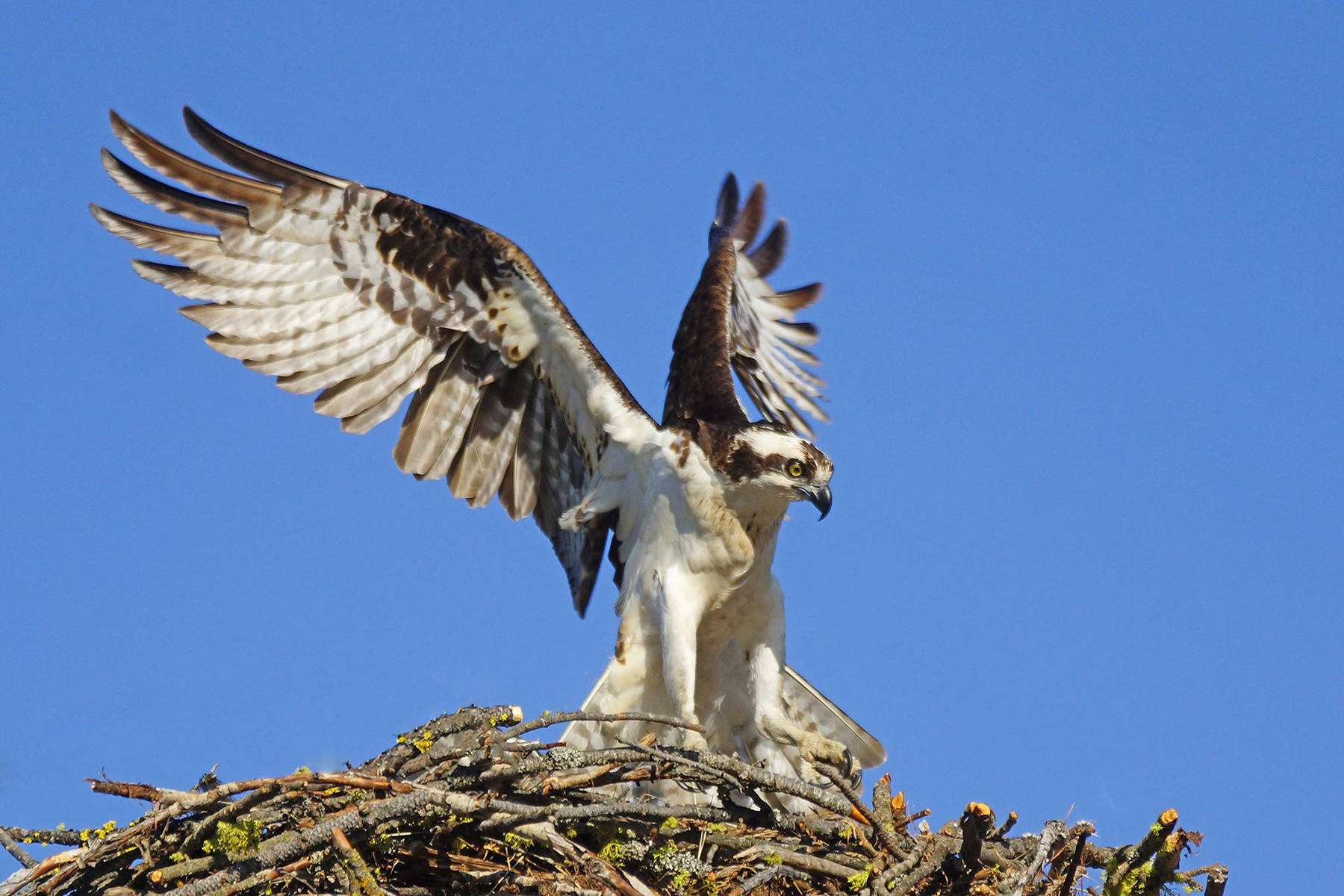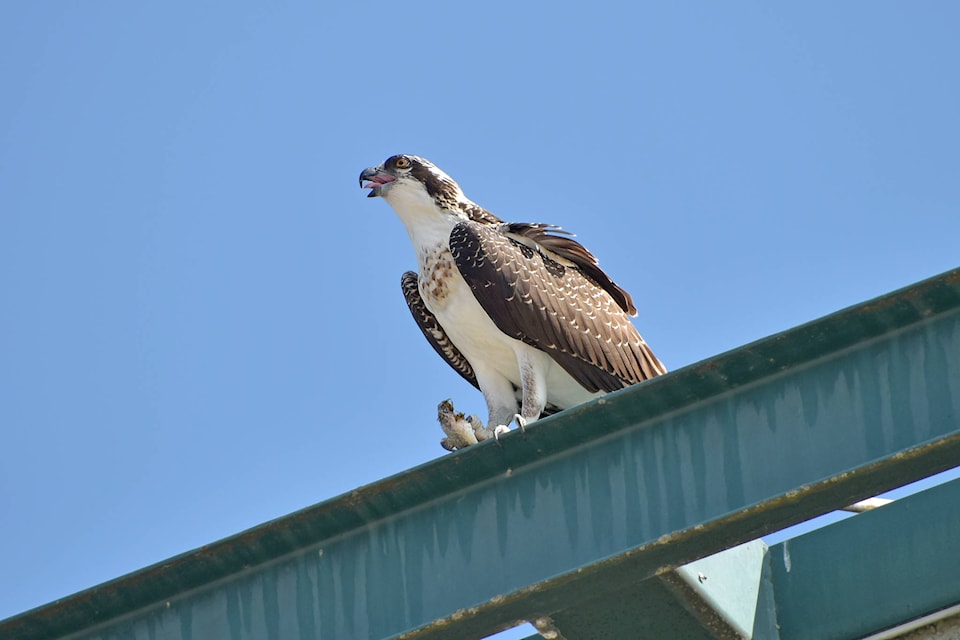Nested around the shore of Shuswap Lake or in the city on top of hydro poles, osprey have been a common sight this summer in Salmon Arm.
Ed McDonald, the president of the Shuswap Naturalists, said he has seen the number of the birds swell in the Salmon Arm bay area.
Although osprey can be seen along the shores of many fish-bearing lakes and streams, this was not always the case.
McDonald said before the widely-used insecticide DDT was banned in the early 1970s, populations of osprey and other birds were under threat. The chemical thinned bird eggs, often killing the embryo inside and leading to a population crash of ospreys, eagles and other species.
Read More: Osprey nest in downtown Salmon Arm will remain until new year
Read More: Teamwork brings injured South Okanagan osprey back to its nest
Since the ban, osprey populations have been steadily rising. That growth trend became sharper when BC Hydro crews began installing nesting platforms and taking steps to stop the birds from being electrocuted in the 1990s. McDonald praised the work BC Hydro crews do to build the platforms either on or near the power poles when ospreys are seen trying to establish a nest in the area. He also noted that ospreys are sometimes killed by the power lines, including one during the Roots and Blues Festival.
McDonald said the nests on the man-made platforms are less likely to be tipped over by windstorms than those in trees, but he noted that one of osprey nests near his home in Sunnybrae is in a large mature fir tree.
Availability of prey is what draws the osprey to the Shuswap. McDonald said they feed on young trout and salmon, but more frequently on the invasive carp which moved into the Shuswap from the Okanagan in the 1920s.
The relatively slow-swimming carp are also a favoured prey for river otters which also have a healthy population in the Shuswap according to McDonald.
Read More: Drones reported to be disturbing bird sanctuary
Read More: Hydro crews in B.C. help move ospreys evicted from nest
McDonald said a strong osprey population along the shores of Shuswap Lake is unlikely to have a negative impact on other species. Ospreys live almost exclusively on fish, meaning they are not competing for prey with other birds, such as the short-eared owls that make their winter hunting grounds in the Salmon River delta targeting mice and voles. Eagle populations are also unlikely to be negatively affected as the larger birds, which are not as keen fishers, are sometimes seen stealing ospreys’ catches.
@SalmonArm
jim.elliot@saobserver.net
Like us on Facebook and follow us on Twitter

